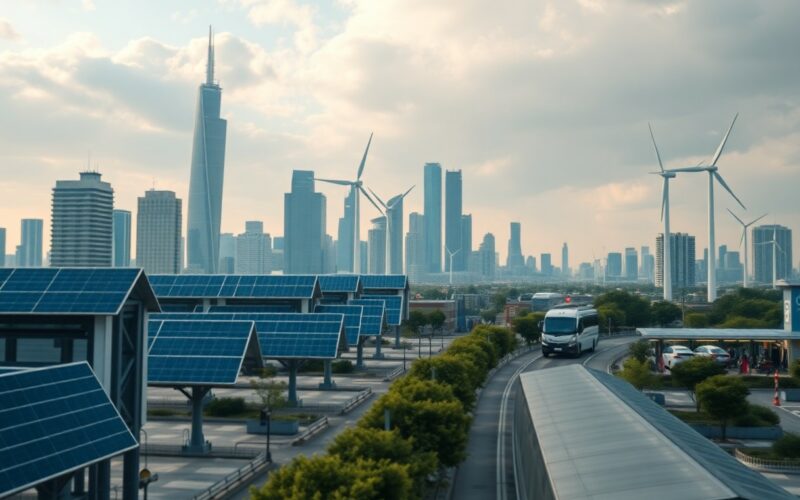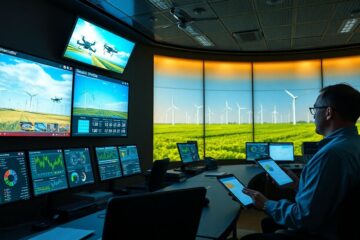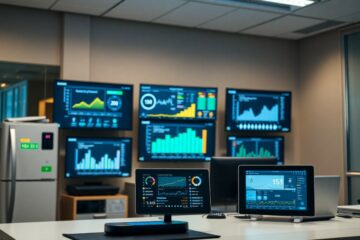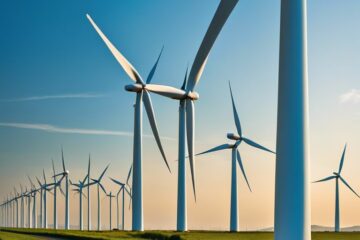Most people are unaware of how rapidly renewable energy technologies are evolving and influencing the landscape of energy consumption. As you explore the advancements in solar, wind, and energy storage, you’ll discover that these innovations are not only necessary for combating climate change but also for fostering economic growth. Your awareness of emerging technologies like green hydrogen and smart grids will help you better understand how they can impact your life and the environment. Dive deeper into this topic to learn more about A Sustainable Tomorrow: The Future of Energy, and see how you can contribute to a cleaner future.
Table of Contents
Key Takeaways:
- Advancements in solar panel efficiency and energy storage solutions are enhancing the viability and affordability of solar energy systems.
- Tidal and wave energy technologies are gaining traction as reliable sources of renewable energy harnessing the power of ocean movements.
- Innovations in hydrogen production, particularly green hydrogen from renewable sources, are poised to transform energy storage and transportation sectors.
- Smart grid technologies are enabling more efficient energy distribution, facilitating the integration of diverse renewable sources into existing power systems.
- Artificial intelligence and machine learning are being leveraged to optimize energy management and predict supply and demand fluctuations in renewable energy markets.
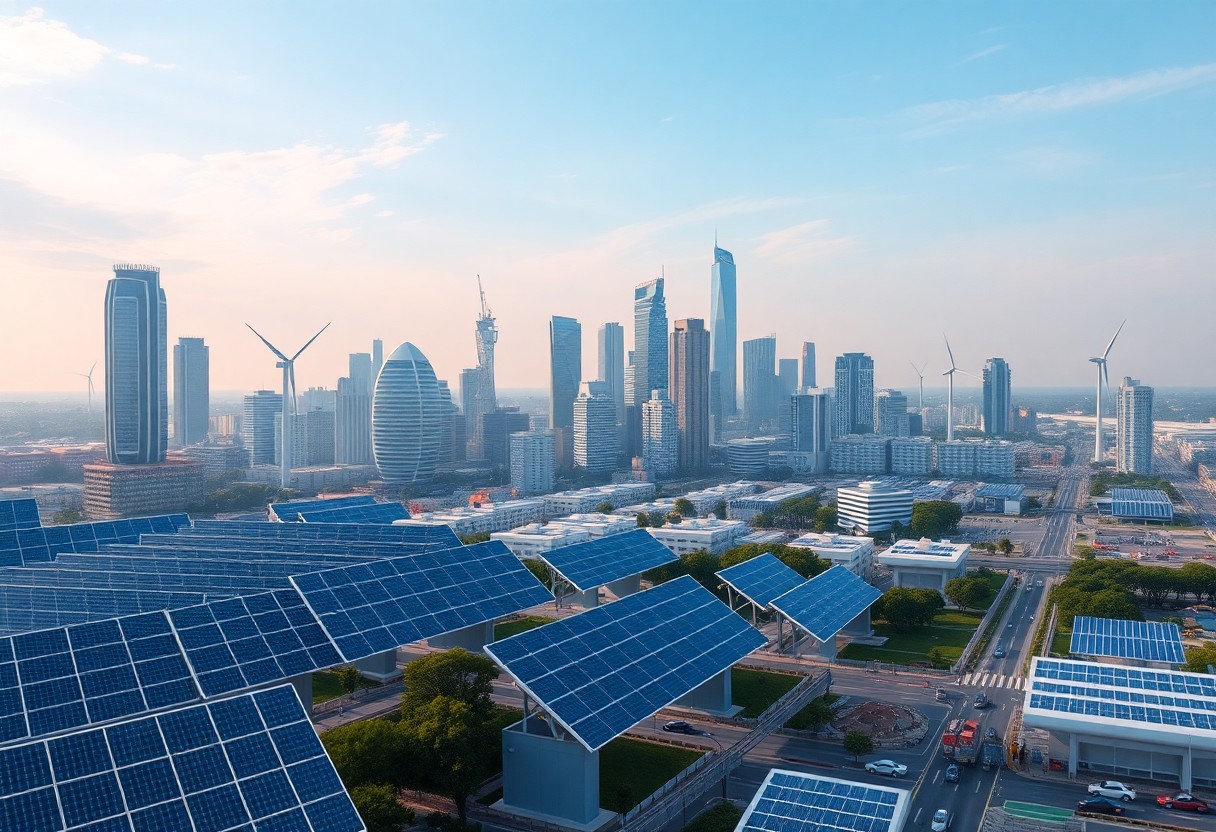
Current Landscape of Renewable Energy
Overview of Renewable Energy Sources
The renewable energy landscape is diverse, encompassing a range of sources that are pivotal in reducing our dependence on fossil fuels. On a large scale, you will find solar, wind, hydroelectric, geothermal, and biomass options collectively contributing to a cleaner energy mix. Each source harnesses natural processes, making them sustainable choices for your energy needs. For instance, solar energy utilizes photovoltaic cells to convert sunlight into electricity, whereas wind energy harnesses the movement of air through turbines to produce power. Understanding these sources is necessary in recognizing their roles in addressing climate change.
Moreover, as you explore these energy options, you will discover that their adoption is influenced by factors such as geographic location and technological advancements. On one hand, regions with abundant sunlight may prioritize solar power, while coastal areas often tap into wind energy. Advances in technology have made it easier and more cost-effective for individuals and communities to integrate these renewable sources into their energy systems, paving the way for a sustainable future.
Global Adoption Rates
Before discussing the advancements in renewable energy, it is important to take stock of the current global adoption rates. You might be surprised to learn that renewable energy sources are growing faster than ever before. While traditional fossil fuels continue to dominate global energy markets, your attention should be drawn to significant strides made in adopting renewables, particularly in countries that have set ambitious carbon reduction targets. With increasing global awareness around climate issues, nations are beginning to prioritize these cleaner alternatives as a part of their energy strategies.
This trend is reflected in the statistics, with renewable energy’s share of global electricity generation steadily increasing. You may find it interesting that in many cases, renewables are now the most affordable sources of new electricity generation. For instance, solar and wind power are often cheaper than coal and natural gas, making them attractive options for investment and development. The momentum behind renewables is likely to continue accelerating as more countries move to phase out fossil fuel subsidies and implement supportive policies.
Policy and Regulatory Frameworks
About the growth of renewable energy, the role of policy and regulatory frameworks cannot be overstated. As you engage with this topic, you will recognize that government policies are instrumental in shaping the landscape of renewable energy. Legislation that supports incentives, funding for research and development, and favorable tax conditions can greatly impact the pace at which renewables are adopted in your region. These frameworks serve to bridge the gap between traditional energy systems and emerging technologies, encouraging investment in renewable infrastructure.
With a well-structured policy approach, you can also observe that more countries are working to align their energy strategies with climate goals set by international agreements such as the Paris Agreement. This alignment fosters collaboration and innovation within the sector, allowing for greater public support and accelerated implementation of clean energy technologies. Moreover, the ongoing development and refinement of regulations can help ensure that renewable energy continues to progress towards a more sustainable future.
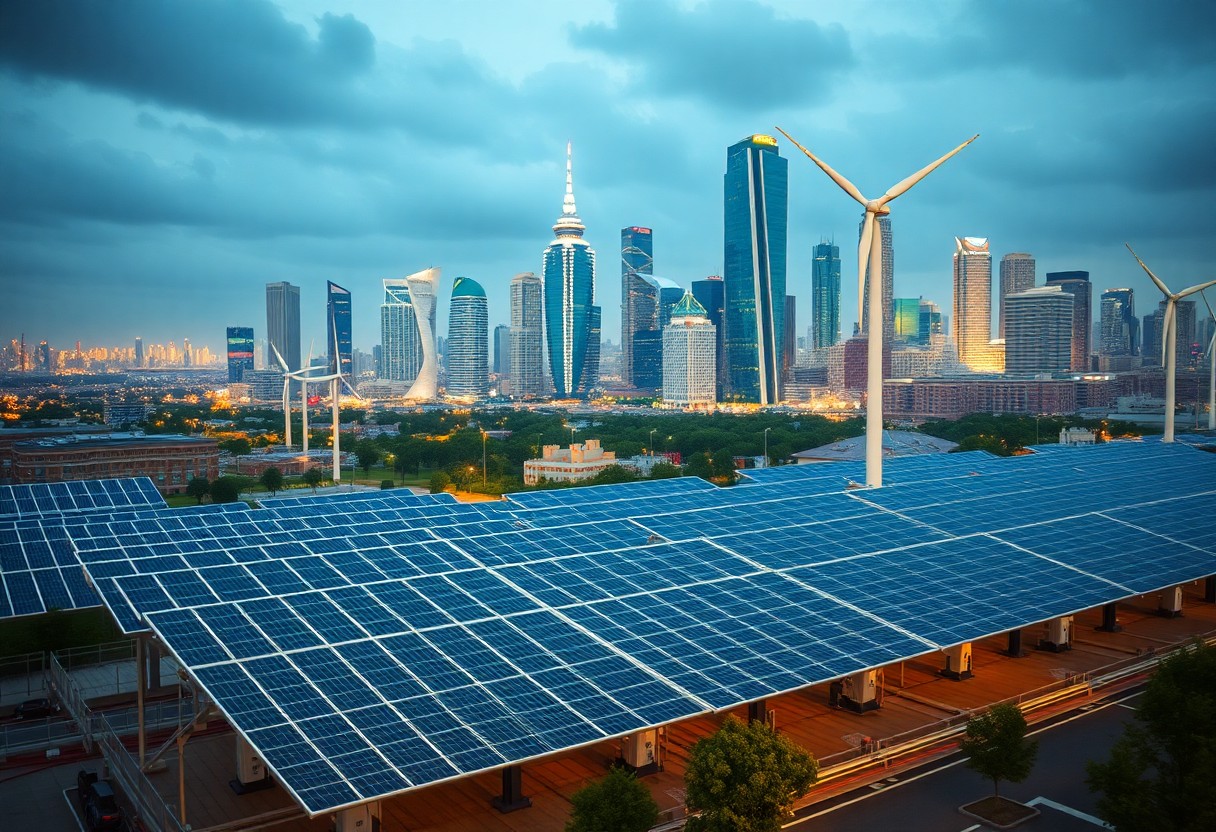
Solar Energy Innovations
There’s no denying that solar energy is at the forefront of the clean energy revolution. The latest innovations in solar technology are shaping how we harness the sun’s power, making it more efficient and accessible than ever before. For a deeper explore the latest advancements in solar technologies, you can explore Green Energy Technology Advances 2024: AI & Solar Trends. These developments not only drive down costs but also enhance performance, putting solar energy firmly in the spotlight for a sustainable future.
Photovoltaic Advances
Around the globe, researchers and engineers are making significant strides in photovoltaic technology. The efficiency of solar panels continues to improve, with newer materials and designs enabling panels to capture a broader spectrum of sunlight. You might be excited to know that innovative solutions, like perovskite solar cells, are emerging as game-changers, offering the potential for greater energy conversion rates at a fraction of the cost of traditional silicon-based cells.
Around the same time, the integration of artificial intelligence (AI) into solar technologies helps optimize energy management. Smart systems are capable of predicting energy output based on weather patterns and user consumption. This means that your solar energy systems can be fine-tuned to deliver maximum efficiency, minimizing waste and maximizing savings.
Concentrated Solar Power Technologies
Around the world, concentrated solar power (CSP) technologies are gaining traction as a means of efficiently turning sunlight into electricity. CSP systems utilize mirrors or lenses to concentrate a large area of sunlight, thereby generating high temperatures to produce steam that drives a turbine. This approach allows for continuous energy generation, even when the sun isn’t shining, which is a significant advantage that can enhance your energy reliability.
The efficiency of CSP is further enhanced by thermal storage systems that allow energy to be stored and used when needed. This innovative aspect ensures that CSP is not solely dependent on daylight, making it a more resilient part of the renewable energy landscape. By incorporating innovative designs and advanced materials, CSP technology is continuously evolving to meet both energy demands and environmental standards.
Bifacial Solar Modules
Energy from bifacial solar modules is becoming increasingly popular due to their ability to capture sunlight from both sides of the panel. This dual-sided design significantly boosts energy production, allowing you to maximize your investment in solar technology. By virtue of their enhanced efficiency, bifacial modules can generate up to 30% more electricity compared to traditional panels, especially in environments with reflective surfaces like snow or sand.
And as installers begin to recognize the advantages of this technology, you can expect greater adoption rates in residential and commercial sectors. Bifacial modules are not only a sophisticated choice for efficiency but also contribute to the overall sustainability of your energy system, benefiting both your wallet and the environment.
Wind Energy Technologies
Your understanding of wind energy technologies is integral to grasping the future of renewable energy. As the world grapples with climate change and seeks sustainable solutions, advancements in wind energy are becoming more significant. Cutting-edge technologies, particularly in offshore development and turbine design, are set to transform how we harness wind power effectively.
Offshore Wind Developments
Technologies for offshore wind are rapidly evolving, offering promising solutions for energy generation. These projects are usually located in expansive ocean waters and can generate substantial amounts of power due to the stronger and more consistent winds found offshore. As you explore the potential of offshore wind farms, you’ll discover that they can significantly reduce the visual impact on land, while providing a large energy output important for urban centers.
Moreover, innovations in floating wind turbines allow for operations in deeper waters where conventional fixed structures wouldn’t be feasible. This opens up vast new areas for development, vastly increasing the potential of wind energy. The combination of offshore and floating technology stands to reshape energy landscapes globally.
Advanced Turbine Designs
Any discussion about the future of wind energy inevitably leads to advanced turbine designs. These innovations focus on improving efficiency and output. Modern turbines are becoming larger and more powerful, allowing them to capture more wind energy than ever before. As you probe into this sector, it’s important to note some key features of these advanced designs:
Key Features of Advanced Turbine Designs
| Larger Blades | Enhance energy capture and efficiency. |
| Smart Technology | Enables real-time monitoring and optimal performance adjustments. |
| Improved Materials | Increase durability and reduce maintenance costs. |
| Vertical Axis Turbines | Offer advantages for urban installations and lowering noise. |
But the advancements in turbine design do not just relate to size or materials; they also encompass aerodynamics and efficiency. Turbines designed with improved aerodynamic profiles are capable of producing power even at low wind speeds, which enhances their overall effectiveness across various environments. This means that not only do they perform better, but they also extend the usability range of wind energy installations.
Energy Storage Solutions
Around the globe, researchers and engineers are focusing on robust energy storage solutions to complement wind energy systems. The intermittent nature of wind makes energy storage systems vital for balancing energy supply and demand. Innovations like lithium-ion batteries, pumped hydro storage, and advanced flywheel technology are transforming how you can store excess energy produced by wind farms.
Furthermore, integrating energy storage with wind power allows you to use electricity even when the wind isn’t blowing. This capability not only enhances reliability but also bolsters the overall efficiency of your energy systems, making the transition to renewable energy more seamless and manageable.
Turbine innovation, combined with effective energy storage solutions, creates a formidable energy strategy. As you look toward the future of renewable energy, understanding these developments will help you appreciate the monumental shift in how you harness, store, and utilize wind energy. With such advancements, the potential for generating sustainable energy is more promising than ever.
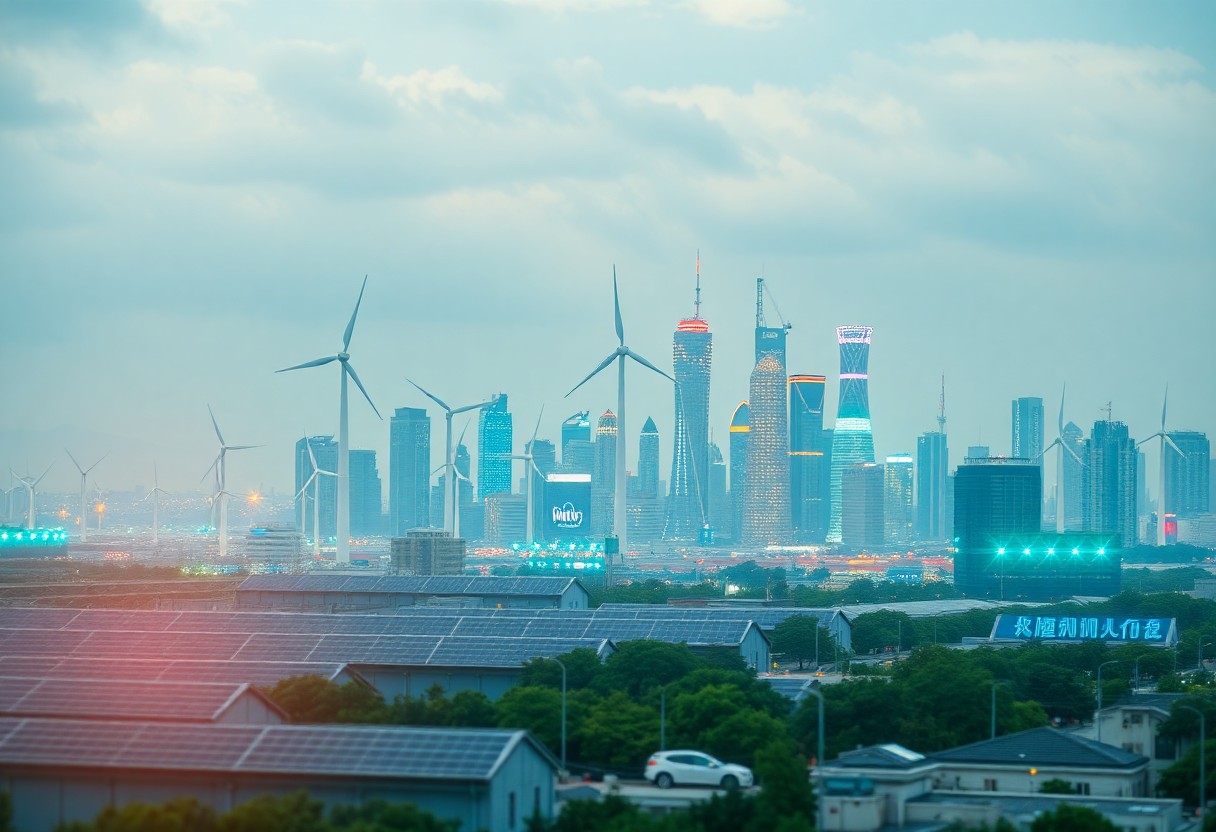
Biomass and Bioenergy Developments
Unlike traditional fossil fuels, biomass and bioenergy presents a rapidly evolving landscape for sustainable energy production. This sector encompasses the conversion of organic materials, such as plant matter and waste, into energy-rich fuels. As you investigate into the future of this technology, it becomes clear that innovations in biomass offer valuable solutions for reducing greenhouse gas emissions while utilizing materials that would otherwise contribute to landfill waste.
Next-Generation Biofuels
After years of research and development, you can now explore the world of next-generation biofuels, which include advanced fuels derived from cellulosic biomass, algae, and non-food feedstocks. These innovative biofuels are designed to replace gasoline and diesel, significantly diminishing your carbon footprint. Unlike first-generation biofuels that often compete with food crops, next-generation solutions utilize waste materials and less arable land, thus promoting a more sustainable approach to energy production.
This new generation not only enhances fuel efficiency but also aims to deliver higher performance standards that meet modern energy demands. By adopting these biofuels, you contribute to an energy transition that prioritizes environmental conservation while enhancing energy security. The potential for next-generation biofuels to interconnect with existing infrastructures makes them a promising option for a cleaner, more resilient energy future.
Waste-to-Energy Technologies
NextGeneration waste-to-energy technologies transform everyday waste into usable energy, addressing both environmental sustainability and energy scarcity. By converting municipal solid waste and agricultural byproducts into bioenergy, these technologies allow you to participate in a circular economy, where waste is not discarded but repurposed for clean energy production. Each step of waste conversion leads to reduced landfill usage and the mitigation of greenhouse gas emissions that are typically released during waste decomposition.
For instance, modern waste-to-energy facilities use advanced thermochemical processes, such as gasification and anaerobic digestion, to convert organic waste into biogas or synthetic fuels. These innovations not only minimize the volume of waste but also capture valuable energy resources that can be fed back into your local energy grid. Furthermore, as these technologies continue to evolve, they promise greater efficiencies and lower emissions, ensuring that you can support sustainable community practices while benefiting from developed energy sources.
Carbon Capture and Utilization
Developments in carbon capture and utilization (CCU) present a transformative approach within the biomasses and bioenergy sector. By capturing carbon dioxide emissions from industrial processes and repurposing them, you can directly influence climate change mitigation strategies. Technologies in CCU capitalize on captured carbon, converting it into valuable products such as fuels, chemicals, and building materials, thus providing a sustainable alternative to fossil fuel dependency.
Utilization of these carbon-based technologies gives you the opportunity to reduce emissions while producing everyday imperatives. By supporting CCU initiatives in your community or through your consumer choices, you inspire a shift towards a greener economy that effectively locks carbon back into the cycle, creating a symbiotic relationship between energy production and environmental stewardship. As you engage in the conversation around these advancements, you play a pivotal role in fostering innovations that redefine the future of energy.
Emerging Technologies in Hydropower
After years of evolving to meet the demands of a changing energy landscape, hydropower is entering a new era marked by innovative technologies that promise to expand its capacity and efficiency. As you explore this vital component of renewable energy, you will discover groundbreaking advancements that not only enhance traditional methods but also create entirely new opportunities for energy generation and storage. From small-scale solutions that empower local communities to cutting-edge systems harnessing the ocean’s power, the future of hydropower holds immense potential.
Small-Scale Hydropower Solutions
An increasingly popular trend is the rise of small-scale hydropower solutions, which offer a more decentralized approach to energy generation. These systems can operate individually or as part of a community grid, making them ideal for rural areas where large-scale infrastructure may be infeasible. You may find that these smaller systems often require less capital investment and can be more environmentally friendly compared to their larger counterparts. This allows communities to meet their energy needs sustainably while reducing their dependence on fossil fuels.
Additionally, small-scale solutions can take various forms, including micro-hydropower plants and pico-hydropower systems. By harnessing the kinetic energy from small streams or rivers, you can effectively create electricity without significant environmental disruption. These technologies can play a vital role in achieving energy autonomy for communities and fostering sustainable development.
Wave and Tidal Energy Innovations
With the world’s oceans covering over 70% of the Earth’s surface, wave and tidal energy innovations have emerged as promising avenues for renewable energy generation. These technologies utilize the predictable and powerful forces of the ocean tides and waves to generate electricity. You will find that some of the most advanced systems involve underwater turbines or buoys that convert the motion of waves into electrical energy, offering a steady and reliable power source.
And as research progresses, these innovations are becoming not only more efficient but also more economically viable. Enhanced designs are minimizing environmental impacts while increasing energy yields. Moreover, advancements in materials and data collection methods are leading to better predictive models for energy production, enabling you to explore the full potential of ocean-based power in your energy portfolio.
Hydroelectric Storage Systems
On the horizon of hydropower technology, hydroelectric storage systems are gaining attention as a means to create stable and reliable energy supplies. These systems harness the power of pumped-storage hydroelectricity, which involves pumping water to a higher elevation during periods of low energy demand and releasing it during peak times. By understanding and utilizing your energy consumption patterns, you can significantly enhance grid stability and manage energy flow efficiently.
This innovative approach not only maximizes energy efficiency but also helps balance supply and demand in an increasingly diverse energy landscape. As more intermittent energy sources, such as solar and wind, become prominent, hydroelectric storage systems can complement them by providing instantaneous power and supporting grid resilience. In doing so, you participate in a more sustainable future while ensuring consistent access to energy when you need it most.
The Role of Hydrogen in Renewable Energy
Keep in mind that hydrogen is swiftly emerging as a significant player in the transition to renewable energy. Its potential to store and transport energy efficiently places it at the forefront of sustainable energy solutions. As global energy demands continue to rise, understanding hydrogen’s role and its various applications will be vital for both the public and private sectors as they formulate strategies to implement cleaner energy resources.
Green Hydrogen Production Methods
Between the various methods of hydrogen production, *green hydrogen* stands out as a particularly sustainable approach. This process typically utilizes renewable energy sources, such as solar or wind power, to perform electrolysis of water, splitting it into hydrogen and oxygen without generating harmful emissions. Innovations in technologies and materials are constantly improving the efficiency of electrolysis, reducing costs and paving the way for widespread adoption.
Moreover, there are alternative methods such as biomass gasification, which converts organic materials into hydrogen, also contributing to *green hydrogen* production. Each technique presents unique challenges and advantages that you should be aware of, especially as they pertain to the overarching goal of reducing carbon footprints and integrating more renewable resources into the energy mix.
Hydrogen Storage and Distribution
One of the significant challenges facing hydrogen energy is its *storage and distribution*. Unlike other fuels, hydrogen has a low energy density by volume and can be difficult to store efficiently. Various methods exist, including high-pressure tanks, liquid hydrogen storage, and chemical hydrogen storage, each with its own set of benefits and limitations. Properly addressing these challenges is vital to facilitate the widespread use of hydrogen in the energy market.
Furthermore, the infrastructure for hydrogen distribution is still in its infancy. As you consider the potential of hydrogen energy, it’s important to recognize that effective solutions will need to be developed to ensure that hydrogen can be delivered safely and economically to end-users.
Hydrogen storage methods are evolving. Companies are investing in new technologies to create safer and more efficient systems, including advanced composite materials for tanks and new chemical processes for hydrogen release. These innovations could enable large-scale deployment of hydrogen solutions for transportation and industrial applications, linking hydrogen production with consumption in ways that enhance overall energy efficiency.
Future Applications of Hydrogen
Role in renewable energy, hydrogen’s future applications extend far beyond simple energy storage. As industries aim for decarbonization, hydrogen is becoming increasingly integral in sectors like transportation, where it can power fuel-cell vehicles, and in manufacturing, where it can replace fossil fuels in processes such as steel production. This dual capability offers *significant reductions* in greenhouse gas emissions, showcasing hydrogen as a versatile solution to multiple energy challenges.
Additionally, hydrogen can play a vital role in *balancing electrical grids* by absorbing excess renewable energy and releasing it when needed. This characteristic positions hydrogen not just as an energy carrier but also as a linchpin in stabilizing the energy infrastructure of the future, helping to ensure a reliable and resilient energy supply.
Hydrogen applications are numerous. With ongoing research and investment in emerging technologies, industries are exploring practical uses for hydrogen in everything from agriculture to energy-intensive manufacturing sectors. This versatility further solidifies hydrogen’s position within a diversified renewable energy strategy, establishing it as a beacon for your future energy endeavors.
Energy Storage and Smart Grids
Many innovations in the energy sector are reshaping how you perceive and utilize renewable energy. As you explore the future of energy, you’ll come across the vital role of energy storage systems and smart grids. These technologies not only improve the efficiency of energy management but also help address some of the intermittent nature of renewable sources, such as solar and wind. By enhancing your understanding of these advancements, you’ll be better equipped to harness the benefits of renewable energy in your daily life and future endeavors.
Advancements in Battery Technologies
Around the world, the race for better and more efficient battery technologies is becoming increasingly competitive. You may have heard of lithium-ion batteries, but new alternatives are emerging that promise to enhance energy storage solutions significantly. Innovations in solid-state batteries and flow batteries could offer improved safety, longer lifespans, and faster charging times. As these technologies develop, you could benefit from a more reliable and cost-effective means of storing energy, ensuring that your renewable energy systems can function smoothly even when sunlight or wind isn’t available.
Furthermore, the rising interest in recycling battery materials is crucial for a sustainable future. With advancements in battery recycling technologies, it is becoming easier to recover valuable resources, which can then be utilized in the production of new batteries. This closed-loop system not only addresses environmental concerns but also helps reduce costs associated with raw materials. As a consumer, you stand to gain from these advancements through both lower costs and decreased environmental impact.
Integration of Renewable Energy into Grids
Technologies that facilitate the integration of renewable energy into existing power grids are necessary for a greener future. As you engage with this topic, you’ll find that smart grids, which use digital technology to monitor and manage energy flows, play a pivotal role in optimizing energy distribution from various sources of generation. These grids allow you to manage energy demand and supply dynamically, resulting in more efficient energy usage and reduced waste.
Renewable energy integration means that the grids can handle large amounts of distributed energy sources, such as rooftop solar panels and wind turbines located further afield. This capability allows for a more resilient energy ecosystem where you can tap into renewable sources readily, ensuring that green energy is always available for your needs. As a result, the shift towards decentralized energy systems is becoming more practical and beneficial for everyone involved.
The Future of Energy Management Systems
Energy management systems (EMS) represent the future of how you can interact with energy consumption in your home or business. These systems help you to monitor and optimize energy use, making it possible for you to engage with renewable energy sources actively. Advanced analytics and machine learning embedded in EMS technologies empower you to make informed decisions about your energy consumption, leading to significant savings and a lower carbon footprint.
Storage solutions are evolving to interact seamlessly with these energy management systems, enabling you to store energy at optimal times, such as when power rates are low or when excess renewable energy is available. This customization allows you to take full advantage of the shifting energy landscape, ensuring that you are always maximizing efficiency and cost-effectiveness.
Conclusion
Summing up, the future of renewable energy is bright, shaped significantly by emerging technologies that promise to revolutionize how you harness, store, and utilize energy. From advancements in solar efficiency to breakthroughs in energy storage solutions like solid-state batteries, each innovation plays a role in making renewable sources more accessible and reliable for your everyday needs. As you explore these developments, consider how they can fit into your life, whether it’s through personal investments in home solar panels or simply advocating for policies that support these technological advancements.
As you look toward tomorrow, staying informed about these trends enables you to make choices that align with a sustainable future. Engaging with new technologies not only benefits your own energy footprint but also contributes to a larger movement towards a cleaner, more sustainable planet. The path to renewable energy is evolving, and by embracing these emerging technologies, you position yourself at the forefront of a global transformation that holds the promise of a more sustainable and equitable future for all.
FAQ
Q: What are some of the emerging technologies in renewable energy?
A: Emerging technologies in renewable energy include advanced solar photovoltaic cells, offshore wind farms, floating solar power plants, energy storage solutions (such as lithium-ion and solid-state batteries), green hydrogen production, and bioenergy with carbon capture and storage (BECCS). These innovations aim to enhance efficiency, reduce costs, and expand the potential of renewable sources.
Q: How does energy storage impact the future of renewable energy?
A: Energy storage plays a significant role in balancing supply and demand, especially with intermittent sources like wind and solar. Innovations like grid-scale batteries, pumped hydro storage, and flywheel systems allow for excess energy generated during peak production to be stored for later use, ensuring a stable power supply and increasing the reliability of renewable energy systems.
Q: What role does green hydrogen play in renewable energy?
A: Green hydrogen, produced through electrolysis powered by renewable energy sources, is seen as a versatile energy carrier. It can be used as a fuel for transportation, in industrial processes, or as a means of energy storage. By using green hydrogen, we can decarbonize sectors that are hard to electrify directly, such as shipping and heavy industry.
Q: How are smart grids influencing renewable energy integration?
A: Smart grids utilize advanced technologies like sensors, analytics, and automated systems to enhance the efficiency of electricity distribution. They facilitate the integration of various renewable energy sources by providing real-time data on energy supply and demand, improving load management, and enhancing the overall resilience of the energy network.
Q: What impact do government policies have on renewable energy technologies?
A: Government policies play a vital role in shaping the renewable energy landscape through subsidies, tax incentives, and regulatory frameworks. Policies that encourage research and development can drive innovation, while mandates for renewable energy usage can stimulate the market. However, inconsistent policies can lead to uncertainty, affecting investments and technological progress.
Q: How can emerging renewable technologies contribute to job creation?
A: The transition to renewable energy technologies is expected to generate millions of jobs in various sectors, including manufacturing, installation, maintenance, and research. As new technologies emerge and expand, skills training programs will be important to prepare the workforce for these in-demand roles, promoting economic growth and stability in communities.
Q: What are the challenges facing the adoption of new renewable energy technologies?
A: Key challenges to adopting new renewable energy technologies include high initial costs, technological maturity, regulatory hurdles, and public acceptance. Additionally, the need for infrastructure upgrades to support new energy systems, such as charging stations for electric vehicles or grid enhancements for distributed energy resources, can impede progress. Addressing these challenges through innovation and strategic planning is important for a sustainable energy transition.

Our contributing author is a passionate advocate for eco-friendly living and sustainability. With a background in eco-life, they are dedicated to inspiring and empowering individuals to adopt environmentally conscious lifestyles. Through insightful articles, they share practical tips, innovative solutions, and thought-provoking perspectives to promote a greener, more sustainable world. Join them on the journey towards eco-smart living and discover how small choices can make a big impact. 🌱

